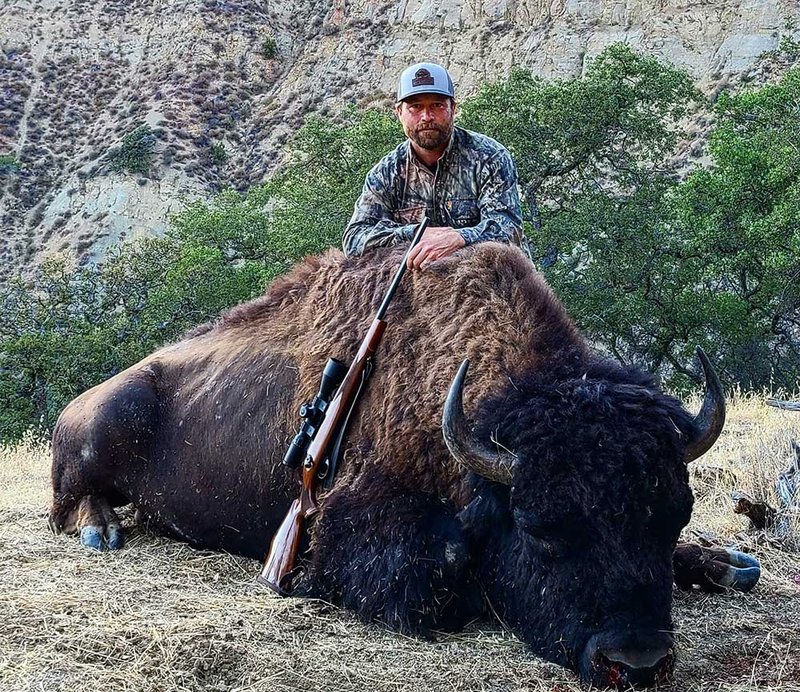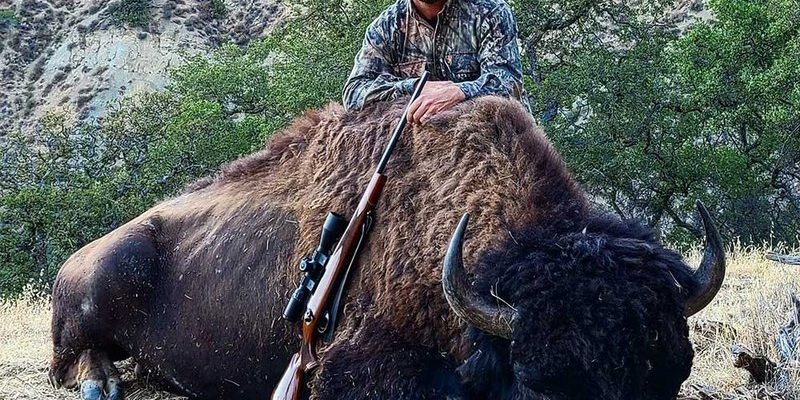
Think of the bison as the ultimate lawnmowers of the plains. They graze tirelessly, helping shape the ecosystems they live in. By understanding their diet and foraging strategies, we can appreciate how important bison are to their environment and how their behaviors reflect the challenges they face in nature. Grab your coffee, and let’s explore the world of the American bison!
What Do American Bisons Eat?
American bison are primarily herbivores. This means that their diet mainly consists of plant material. Here’s a breakdown of what makes up a significant portion of their meals:
- Grasses: Bison thrive on grasses, particularly during the warmer months. They prefer nutrient-rich varieties like bluestem and ryegrass.
- Forbs: In addition to grasses, they enjoy flowering plants, also known as forbs. These provide essential vitamins and minerals.
- Shrubs: When times are tough, bison may resort to eating woody plants or shrubs, especially in winter when grasses are scarce.
You might be wondering how bison find enough food in their expansive habitats. They have an incredible sense of smell, allowing them to detect grasses buried under snow or in dense vegetation. Their powerful digestive systems can also break down tough plant fibers, enabling them to extract maximum nutrition from their diet.
How Bison Graze
Grazing might seem simple, but bison have some unique strategies. They typically graze in groups, which helps them stay safe from predators. Here’s how their grazing habits work:
1. Highly Selective Feeding: Bison are selective eaters and often graze only on the most nutritious parts of the plants. They prefer young, tender shoots, as these are more flavorful and easier to digest.
2. Movement and Migration: Bison are known for their migratory behavior. They travel across vast distances to find fresh grazing pastures. This not only provides them with better food sources but also helps improve the health of the grasslands by allowing areas to recover from overgrazing.
3. Seasonal Changes: Their diet changes with the seasons. In spring and summer, they feast on lush grasses, while in fall and winter, they rely on more fibrous plants and browse shrubs.
By understanding how bison graze, we can see how their behavior is intertwined with the health of their ecosystem. They’re not just eating; they’re also nurturing the environment in which they live.
Social Behavior and Foraging Strategies
Bison are social animals, and their foraging strategies reflect this. Grazing in groups offers safety and benefits to each individual. Here’s how their social structure plays into their eating habits:
– Herd Dynamics: Bison typically form large herds, which can be made up of hundreds of individuals. Within these herds, younger bison learn from elders about the best grazing spots.
– Foraging Together: When foraging, bison often stick close together. This not only helps deter predators but also allows them to find food more efficiently. If one bison discovers a patch of delicious grass, others are likely to follow.
– Vocalizations and Communication: Bison communicate through various sounds, body language, and even scents to alert one another about food sources or potential dangers. This teamwork enhances their survival instincts.
By cooperating in their foraging efforts, they improve their chances of finding nutritious food and avoiding threats.
Adapting to Seasonal Changes
One of the most impressive things about the American bison is their ability to adapt to seasonal changes. Different times of the year bring unique challenges, and bison have strategies to cope with these variations:
– Winter Survival: In winter, deep snow can hide grasses, making it challenging to feed. Bison use their massive heads and strong shoulders to dig through the snow, searching for hidden plants.
– Nutritional Needs: Their diet shifts as the seasons change. In summer, they eat abundant green grasses, while in winter, they rely on tougher plant materials. This adaptability enables them to thrive even when food is scarce.
– Energy Conservation: During colder months, bison reduce their movements to conserve energy. This behavior also allows grasslands to recover, benefiting both the bison and the ecosystem.
These adaptations show just how resilient bison are in the face of nature’s challenges.
Role of Bison in Ecosystems
American bison play a crucial role in their ecosystems, affecting various plant and animal communities. Here’s how they contribute to a healthy environment:
– Grazing Impact: Their grazing helps maintain grassland health by preventing overgrowth. This promotes biodiversity, allowing different plant species to thrive.
– Soil Health: As bison graze, they contribute to nutrient cycling. Their droppings enrich the soil, promoting plant growth and attracting other wildlife.
– Habitat for Other Species: Areas heavily grazed by bison often attract a variety of species, including birds and small mammals, creating a vibrant ecosystem around them.
In this way, bison are not just passive inhabitants of their environments; they actively shape and nurture the ecosystems they live in.
Conservation Efforts and the Future of American Bison
Despite their crucial role, American bison have faced significant declines due to hunting and habitat loss. However, efforts are underway to conserve and restore their populations. Here’s what’s being done:
– Protected Areas: National parks and reserves have been established to provide safe habitats for bison. These areas allow them to roam freely and graze as they naturally would.
– Breeding Programs: Some conservation groups are working on breeding programs to increase bison numbers and even reintroduce them to areas where they once thrived.
– Public Awareness: Educating the public about the importance of bison and their role in ecosystems is key. This knowledge helps garner support for conservation efforts.
Ongoing conservation initiatives are essential for ensuring that American bison can continue to thrive in their natural habitats.
The diet and hunting strategies of the American bison are a testament to their adaptability and resilience. From their selective grazing habits to their role in maintaining healthy ecosystems, these creatures are far more than just a symbol of the American West. They embody the delicate balance of nature, demonstrating how species interact with their environment.
Understanding the bison’s needs and behaviors helps us appreciate the broader ecological picture. As we continue to support conservation efforts and promote sustainable practices, we can ensure that these magnificent animals remain a vital part of our landscapes for generations to come. So the next time you think of bison, remember: they’re not just eating grass—they’re actively shaping the very ecosystems they call home.

